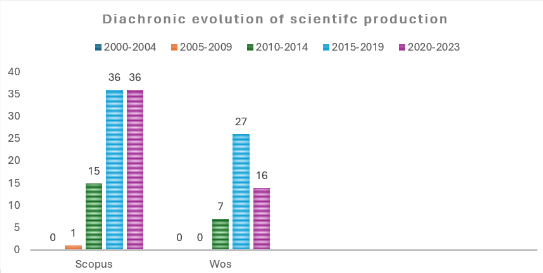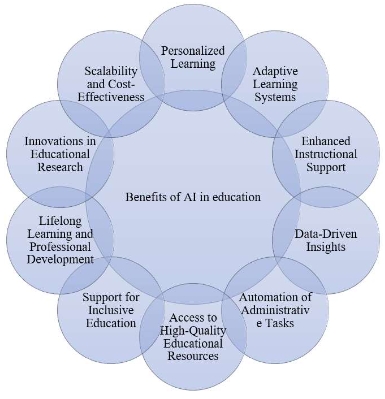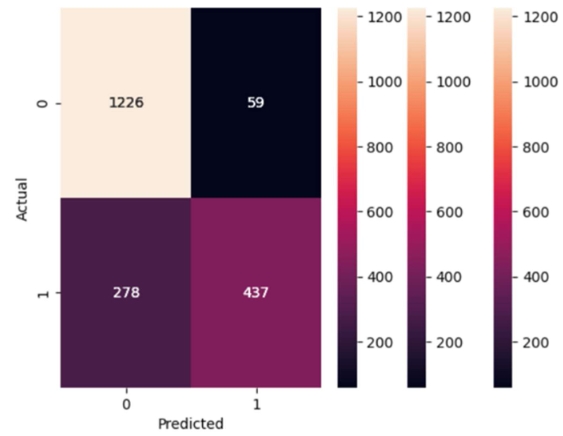Breaking the silence: Unveiling the realities of communicative language teaching in China’s business English class
Abstract
This qualitative study explores the perceptions of Chinese teachers and students regarding the implementation of communicative language teaching (CLT) in Business English (BE) courses. A total of 24 BE students and 14 teachers from 4 colleges in Sichuan, China, participated in the semi-structured interview. Furthermore, the researcher observed 16 BE courses to investigate the actual implementation of CLT by Chinese teachers and students. The findings indicate that adopting CLT in the context of BE in China remains challenging. While teachers and students generally hold positive views about CLT, classroom practices diverge significantly from CLT principles. Several challenges contribute to this misalignment, including the English proficiency levels of students and teachers, teaching facilities, class sizes, examination systems, textbooks, and teachers’ understanding of CLT. These challenges highlight a disconnect between CLT’s pedagogical goals and its practicality in the current landscape of Chinese BE education. The study emphasizes the need for comprehensive educational reforms to address these issues, aiming to bridge the gap between CLT’s theoretical ideals and effective implementation. Ultimately, this could enhance the communicative effectiveness of BE teaching in China.
References
[1]Hymes D. On Communicative Competence. In Pride JB & Holmes J (editors). Penguin; 1972. pp. 269–293.
[2]Chomsky N. Aspects of the theory of syntax. Defense Technical Information Center; 1964. doi: 10.21236/ad0616323
[3]Medriano Jr RS, & Bautista AS. (2020). Integrating business English communication in the contextualized teaching of an ESL graduate course. The Asian ESP Journal. 2020; 16(2.1): 70–88.
[4]Shariq M. Mobile learning in Business English course: Adoptability and relevance to Saudi EFL students' learning styles. The Asian ESP Journal. 2020; 16(4): 334–354.
[5]Sun B, Fan T. The effects of an AWE-aided assessment approach on business English writing performance and writing anxiety: A contextual consideration. Studies in Educational Evaluation. 2022; 72: 101123. doi: 10.1016/j.stueduc.2021.101123
[6]Jiang X. A Study on Characteristics of Career Development Stages of Business English Teachers: Perspective of PCK. Foreign Language World. 2021; 206(5): 41–49.
[7]Wu P, Wang Y. Investigating Business English Teachers’ Belief About Online Assessment: Q Methodology Conducted During COVID-19 Period. The Asia-Pacific Education Researcher. 2021; 30(6): 621–630. doi: 10.1007/s40299-021-00604-7
[8]Nisha PR. Comparing Grammar Translation Method and Communicative Language Teaching in EFL Context: A Qualitative Literature Review. FOSTER: Journal of English Language Teaching. 2024; 5(1): 40–48. doi: 10.24256/foster-jelt.v5i1.159
[9]Brown HD, & Lee H. Teaching by Principles: An Interactive Approach to Language Pedagogy. Pearson Education; 2015.
[10]Adem H, Berkessa M. A case study of EFL teachers’ practice of teaching speaking skills vis-à-vis the principles of Communicative Language Teaching (CLT). Cogent Education. 2022; 9(1). doi: 10.1080/2331186x.2022.2087458
[11]Al-Khamisi KM, Sinha YK. Communicative Language Teaching Methodologies in Omani EFL Context. Open Journal of Modern Linguistics. 2022; 12(04): 481–503. doi: 10.4236/ojml.2022.124035
[12]Shanmugavelu G, Ariffin K, Vadivelu M, et al. Questioning Techniques and Teachers’ Role in the Classroom. Shanlax International Journal of Education. 2020; 8(4): 45–49. doi: 10.34293/education.v8i4.3260
[13]Sato M, Oyanedel JC. “I think that is a better way to teach but …”: EFL teachers’ conflicting beliefs about grammar teaching. System. 2019; 84: 110–122. doi: 10.1016/j.system.2019.06.005
[14]Zhao Y. Exploring the Balance between Fluency and Accuracy in Language Teaching Methodologies: A Comparative Analysis of PPP, TBL, CLT, and GTM. Journal of Education and Educational Research. 2024; 8(1): 127–130. doi: 10.54097/19jkmq18
[15]Khansir AA, Pakdel F. Place of Error Correction in English Language Teaching. Educational Process: International Journal. 2018; 7(3): 189–199. doi: 10.22521/edupij.2018.73.3
[16]Doeur B. Implementation of Communicative Language Teaching: Cambodian EFL Teachers’ Attitudes toward Communicative Language Teaching. International Journal of Instruction. 2022; 15(2): 155–170. doi: 10.29333/iji.2022.1529a
[17]Zhang L, Carter RA, Zhang J, et al. Teacher perceptions of effective professional development: insights for design. Professional Development in Education. 2021; 50(4): 611–624. doi: 10.1080/19415257.2021.1879236
[18]Abdullah BMA. Kurdish Students' Perceptions Toward Communicative Language Teaching at a University in Kurdistan Region Iraq. European Scientific Journal. 2015; 1: 414–426.
[19]Sarfraz S, Mansoor Z, Tariq R. Teachers’ and Students’ Perceptions of the Communicative Language Teaching Methodology in the CALL Environment: A Case Study. Procedia - Social and Behavioral Sciences. 2015; 199: 730–736. doi: 10.1016/j.sbspro.2015.07.604
[20]Rezalou A, Yagiz O. EFL Students’ Perceptions and Attitudes toward Using Communicative Activities in CLT Classroom. Shanlax International Journal of Education. 2021; 9(S2-Sep): 112–124. doi: 10.34293/education.v9is2-sep.4376
[21]Fereidoni J, Baniadam I, & Tadayyon N. Students' Attitudes Toward Grammar Translation Method (GTM) and Communicative Language Teaching (CLT) In English for Specific Purposes (ESP) Courses in Urmia University of Medical Sciences (UMSU). Studies in Medical Sciences. 2018; 29(4): 305–316.
[22]AL-Madani FM. Student Perception of Traditional English Teaching Methods (CLT approach) and Comparison to Modern Methods (Using Technology). International Journal of Education and Information Technologies. 2021; 15: 35–43. doi: 10.46300/9109.2021.15.5
[23]Wu H, SU H, Yan M, et al. Perceptions of Grammar-Translation Method and Communicative Language Teaching Method Used in English Classrooms. Journal of English Language Teaching and Applied Linguistics. 2023; 5(2): 96–104. doi: 10.32996/jeltal.2023.5.2.12
[24]Azizah SN, Supriyono Y, Andriani A. Projecting communicative language teaching (clt) implementation in teaching spoken language at secondary school. Journal of English Teaching, Applied Linguistics and Literatures (JETALL). 2022; 5(2): 179. doi: 10.20527/jetall.v5i2.12873
[25]Sitorus N, Sinaga NT, Siahaan R, et al. The Effectiveness of Communicative Language Teaching towards Students’ Ability in Essay Writing. Edukatif : Jurnal ilmu pendidikan. 2023; 5(1): 276–285. doi: 10.31004/edukatif.v5i1.4505
[26]Arana E. Teacher’s Application of the Communicative Language Teaching (CLT) in Teaching Oral Communication Towards Instructional Strategies. AJARCDE (Asian Journal of Applied Research for Community Development and Empowerment). 2022; 7(1). doi: 10.29165/ajarcde.v7i1.161
[27]Takal GM, Ibrahim NM, Jamal M. Communicative Language Teaching in Public Universities in Afghanistan: Perceptions and Challenges. Theory and Practice in Language Studies. 2021; 11(11): 1434–1444. doi: 10.17507/tpls.1111.11
[28]Nuby MdHM, Rashid RA, Rahman ARMdM, et al. Communicative Language Teaching in Bangladeshi Rural Schools. Universal Journal of Educational Research. 2020; 8(2): 622–630. doi: 10.13189/ujer.2020.080235
[29]Lin S, & Zhao P. An Ivestigation of The Use of Communicative Language Teaching in A Higher Education Institution in China: A Case Study. BERJAYA Journal of Services & Management. 2021; 15: 3–24.
[30]Rahmawati Y. Teachers’ Voices on the Challenges of the Implementation of Communicative Approach in Regards to the 2013 Curriculum. In: Proceedings of the 1st International Conference on Recent Innovations; 2018. pp. 1421–1428. doi: 10.5220/0009928614211428
[31]Hamza AA. Iraqi EFL Teachers' Perceived Difficulties in Implementing CLT in Iraqi Schools. Basic Education College Magazine For Educational and Humanities Sciences. 2019; 44: 319–332.
[32]Yoshihara R, Kurata A, Yamauchi A. Reflective journals to explore struggles and difficulties of novice Japanese EFL university instructors. Reflective Practice. 2019; 21(1): 81–93. doi: 10.1080/14623943.2019.1708714
[33]Ramasivam N, & Nair M. Challenges Faced By Teachers in Adopting Communicative Language Teaching. City University EJournal of Academic Research (CUeJAR). 2019; 1(2): 149–162.
[34]Basok E. The Gap between Language Teaching Policies and Classroom Practices in the Turkish EFL Context: The Effects on Teacher Motivation. MEXTESOL Journal. 2020; 44(2): 1–14.
[35]Yoon JJ, Yoo IW. Why Communicative Language Teaching Has Yet to Work in Korea : Exploring Teachers’ Viewpoints. The Journal of AsiaTEFL. 2019; 16(4): 1332–1347. doi: 10.18823/asiatefl.2019.16.4.17.1332
[36]Aurangzeb I, Khalique S, & Khan A. Challenges in the Implementation of Communicative Language Teaching in Azad Kashmir. Global Language Review. 2022; 7(1): 80–90. doi: 10.31703/glr.2022(VII-I).08
[37]Ahmed STS, Qasem BTA. Problems of Teaching and Learning English as a Foreign Language in South Yemen: A Case Study of Lahj Governorate. ELS Journal on Interdisciplinary Studies in Humanities. 2019; 2(4): 485–492. doi: 10.34050/els-jish.v2i4.7458
[38]Merriam SB. Qualitative Research in Practice: Examples for Discussion and Analysis. John Wiley & Sons; 2002.
[39]Razmjoo SA, & Riazi AM. Do High Schools or Private Institutes Practice Communicative Language Teaching? A Case Study of Shiraz Teachers' in High Schools and Institutes. Reading Matrix: An International Online Journal. 2006; 6(3): 340–363.
[40]Ibrahim MK, & Ibrahim YA. Communicative English Language Teaching in Egypt: Classroom Practice and Challenges. Issues in Educational Research. 2017; 27(2): 285–313.
[41]Da Luz FSdR. The Relationship Between Teachers and Students in The Classroom: Communicative Language Teaching Approach and Cooperative Learning Strategy to Improve Learning [Master Thesis]. Bridgewater State University; 2015.
[42]Daar GF, Ndorang TA. Analysis the Implementation of Communicative Language Teaching and Classroom Interaction in the Effort to Increase Learners’ Speaking Skills. International Journal for Educational and Vocational Studies. 2020; 2(12). doi: 10.29103/ijevs.v2i12.2969
[43]Hà NVT. Vietnamese EFL teachers’ beliefs about communicative language teaching (CLT). Tạp chí Khoa học Ngoại ngữ. 2022; 69: 10–27. doi: 10.56844/tckhnn.69.139
[44]Graus J, Coppen PA. Student teacher beliefs on grammar instruction. Language Teaching Research. 2016; 20(5): 571–599. doi: 10.1177/1362168815603237
[45]Guci RI, Rochsantiningsih D, Sumardi S. Focus on Form and Focus on Forms in Implicit Grammar Teaching Strategy. Indonesian Journal of EFL and Linguistics. 2021; 6(1): 127. doi: 10.21462/ijefl.v6i1.347
[46]Nhac TH. Oral Corrective Feedback Preferences in English Lessons: Learners’ and Teachers’ Perspectives. European Journal of Educational Research. 2022; 11(3): 1643–1655. doi: 10.12973/eu-jer.11.3.1643
[47]Syakira S, Nur S. Learners’ Perceptions on the Use of Oral Corrective Feedback in One-to-One EFL Classroom. Eralingua: Jurnal Pendidikan Bahasa Asing dan Sastra. 2022; 6(2): 286. doi: 10.26858/eralingua.v6i2.26177
[48]Juhansar J. Students’ Perceptions on the Use of Group Discussion Method towards English Speaking Proficiency. Acitya: Journal of Teaching & Education. 2022; 4(2): 357–373.
[49]Rohmah K, Isnaini MohH, Degeng PDD. EFL Students’ Perception of the Use of Group Work. Lingua Susastra. 2023; 4(1): 1–14. doi: 10.24036/ls.v4i1.107
[50]Sakina R. Teachers and Students Perceptions of Grammar Teaching in Curriculum 13. Pedagonal : Jurnal Ilmiah Pendidikan. 2023; 7(1): 64–74. doi: 10.55215/pedagonal.v7i1.7305
[51]Alkhirbash A. Impediments to the Application of Communicative Approach: Survey Among Saudi University Teachers. Theory and Practice in Language Studies. 2023; 13(5): 1310–1317. doi: 10.17507/tpls.1305.27
[52]Burri M. Comparing L2 Teachers’ Practices With Learners’ Perceptions of English Pronunciation Teaching. Profile: Issues in Teachers’ Professional Development. 2023; 25(1): 129–145. doi: 10.15446/profile.v25n1.101156
[53]Daba D, Teshome Z, Bekele E. The Status, Challenges and Prospects of Communicative Language Teaching in East Wallaga Zone, Ethiopia. Journal of Science. 2022; 11(1). doi: 10.20372/STAR.V11I1.05
[54]Mangaleswaran S, Aziz AA. The Impact of the Implementation of CLT On Students’ Speaking Skills. International Journal of Scientific and Research Publications (IJSRP). 2019; 9(4): p8814. doi: 10.29322/ijsrp.9.04.2019.p8814
[55]Xie Y, Ziebart L. Perceptions of effective foreign language teaching. Chinese as a Second Language. 2022; 57(1): 58–84. doi: 10.1075/csl.21025.xie
[56]Savignon SJ. (2001). Communicative Language Teaching for The Twenty-First Century. In Celce-Murcia M (editor). Heinle & Heinle; 2001.
[57]Al Kalbani M, Solabarrieta J, Touq AB. The Relationship Between EFL Teachers’ Attitudes Towards CLT and Perceived Difficulties of Implementing CLT in Language Classes in Omani Context. Springer Nature; 2019.
[58]Armnazi M, Alakrash H. Factors Affecting the Application of Communicative Language Teaching CLT in Syrian Schools. TESOL and Technology Studies. 2021; 2(1): 1–14. doi: 10.48185/tts.v2i1.143
[59]Nguyen VTT. Attitudes and Difficulties That Vietnamese Teachers Have Towards Communicative Language Teaching in Different Teaching Contexts: Public Schools and Private English Centers [Master Thesis]. LCC tarptautinis universitetas; 2022.
[60]Dharmawardene RP. Using Communicative Approach for Language Teaching in Sri Lankan Secondary Schools. European Journal of Social Science Education and Research. 2021; 8(2): 80. doi: 10.26417/321vpa86m
[61]Alharbi A. Exploring Communicative Language Teaching Principles Alignment of English Textbook in Saudi Arabia Middle School. Arab World English Journal. 2020; 11(4): 96–109. doi: 10.24093/awej/vol11no4.7
[62]Pitikornpuangpetch C, & Suwanarak K. (2021). Teachers' Beliefs and Teaching Practices About Communicative Language Teaching (CLT) in A Thai EFL Context. LEARN Journal: Language Education and Acquisition Research Network. 2021; 14(2): 1–27.
[63]Sit HHW. Characteristics of Chinese Students' Learning Styles. International proceedings of economics development and research. 2013; 62: 36–39. doi: 10.7763/IPEDR.2013.V62.8
[64]Ho S. Culture and Learning: Confucian Heritage Learners, Social-Oriented Achievement, and Innovative Pedagogies. In Sanger CS & Gleason NW (editors). Springer Nature; 2020. pp. 117–159.
Copyright (c) 2024 Haowei Chen, Ting Hu, Ena Bhattacharyya, Ushba Rasool

This work is licensed under a Creative Commons Attribution 4.0 International License.









